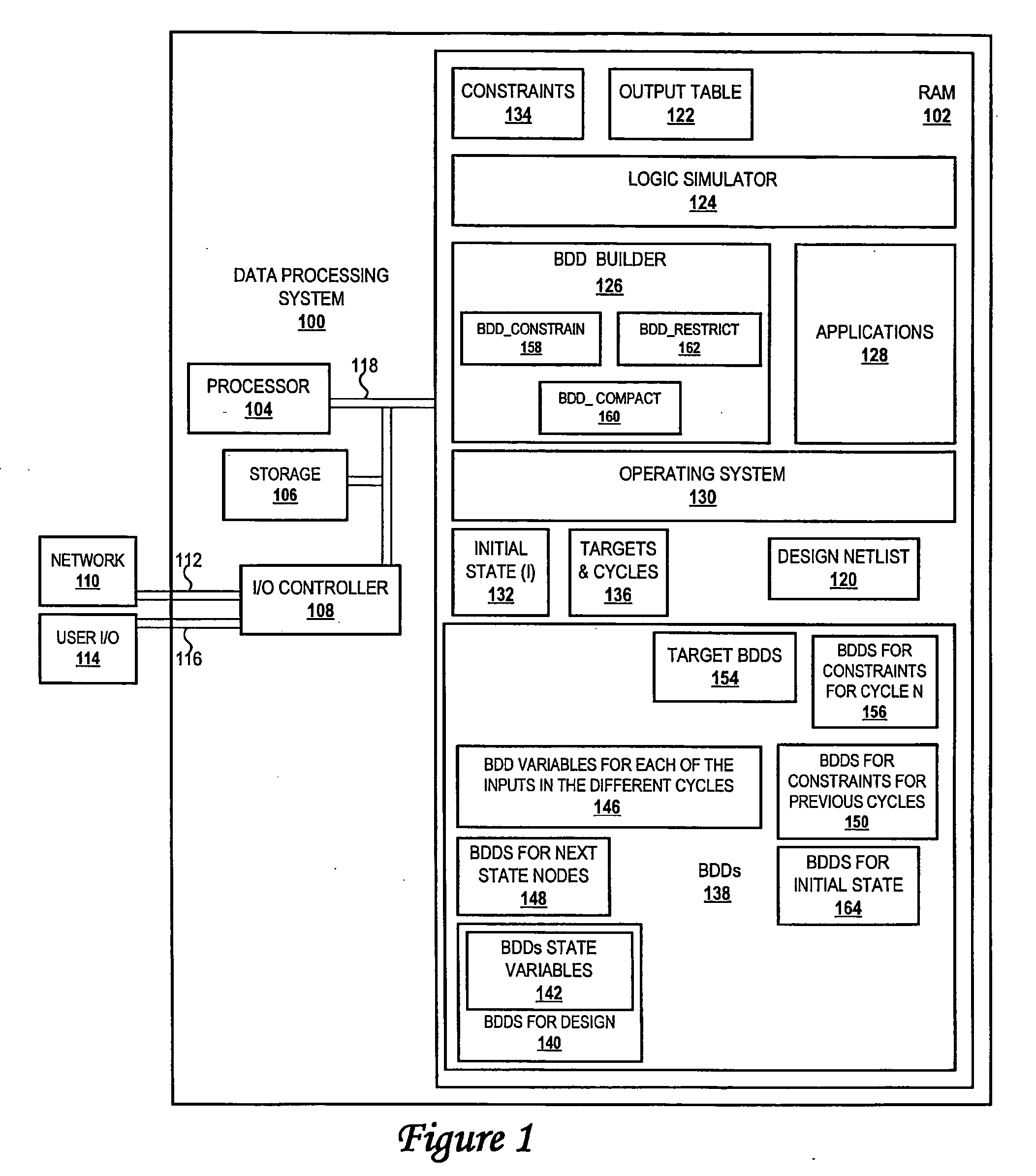Method and system for optimized handling of constraints during symbolic simulation
a symbolic simulation and constraint technology, applied in the field of verification designs, can solve problems such as functional design failure, formal verification and many formal analysis techniques that require exponential computing resources with resp
- Summary
- Abstract
- Description
- Claims
- Application Information
AI Technical Summary
Benefits of technology
Problems solved by technology
Method used
Image
Examples
Embodiment Construction
[0018] The present invention provides a method, system, and computer program product to optimize handling of constraints in a symbolic simulation setting. As described below, the method of the invention minimizes the size of binary decision diagrams by factoring in constraints on a circuit as ‘don't cares’, resulting in an optimized handling of constraints for building binary decision diagrams for nodes in a netlist representation of a circuit. The present invention's optimization of intermediate binary decision diagrams enables significant performance improvements over the methods available in the prior art. The present invention alleviates the problems of exponential complexity and associated resource consumption by managing available resources more efficiently than conventional techniques.
[0019] With reference now to the figures, and in particular with reference to FIG. 1, a block diagram of a general-purpose data processing system, in accordance with a preferred embodiment of t...
PUM
 Login to View More
Login to View More Abstract
Description
Claims
Application Information
 Login to View More
Login to View More - R&D
- Intellectual Property
- Life Sciences
- Materials
- Tech Scout
- Unparalleled Data Quality
- Higher Quality Content
- 60% Fewer Hallucinations
Browse by: Latest US Patents, China's latest patents, Technical Efficacy Thesaurus, Application Domain, Technology Topic, Popular Technical Reports.
© 2025 PatSnap. All rights reserved.Legal|Privacy policy|Modern Slavery Act Transparency Statement|Sitemap|About US| Contact US: help@patsnap.com



